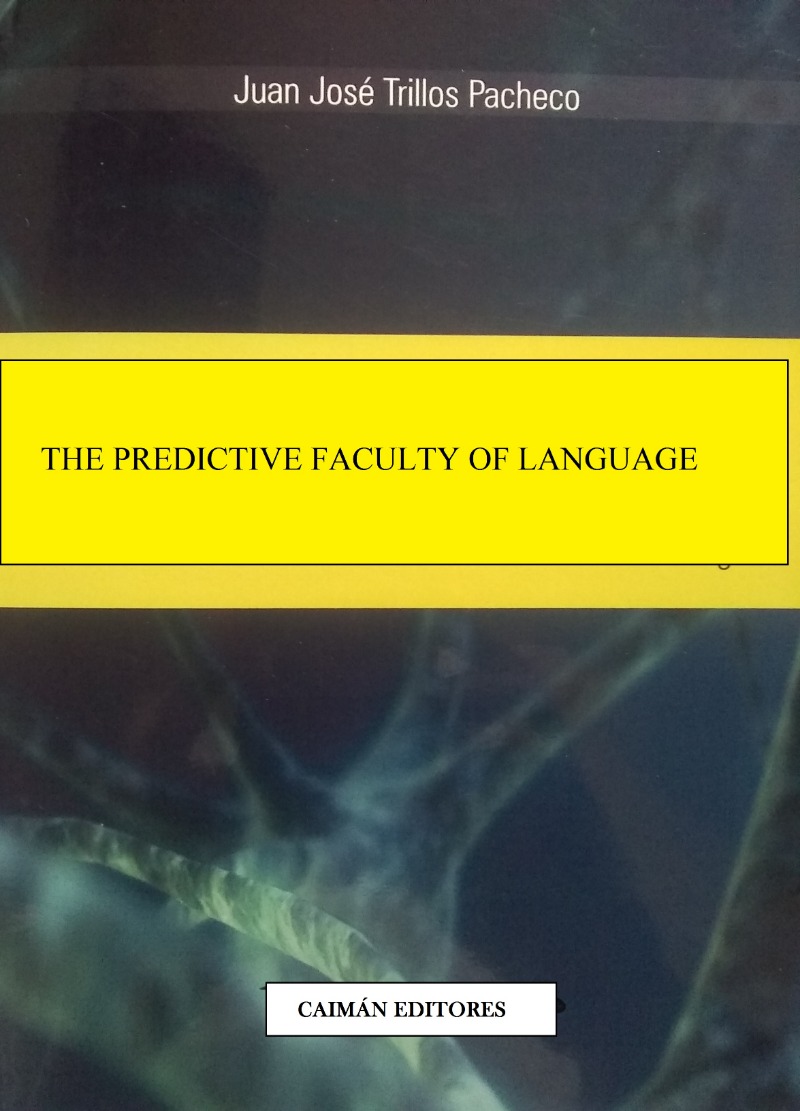
The predictive faculty of language
| Autor: | Trillos Pacheco, Juan Jose |
| Colaborador: | Trillos Arias, Alex Nicolas (Traductor) |
Materia:401 - Filosofía y teoría de las lenguas
Clasificación Thema::CBX - Lengua: historia y obras generales
Público objetivo:Enseñanza universitaria o superior
Colección:Investigación y cultura
Disponibilidad:Disponible
Estatus en catálogo:Próxima aparición
Publicado:2021-05-31
Número de edición:1
Número de páginas:200
Tamaño:15x26cm.
Precio:$57.000
Encuadernación:Tapa blanda o bolsillo
Soporte:Impreso
Idioma:Inglés
Libros relacionados
Las palabras del fuego - Gómez, Adriana; Gallo, Andres Felipe; Valencia Rojas, Carolina; Quiñonez, Edinson; García Pineda, Estefanía; Londoño, Felipe César; Gil, Javier; Herrán, Juan Fernando; Petit, Julien; Aguilar, Melissa; Gómez, Nicolás; Noguera, Patricia; Ángel Arenas, Rosa Ángel Arenas
Las palabras del fuego - Gómez, Adriana; Gallo, Andres Felipe; Valencia Rojas, Carolina; Quiñonez, Edinson; García Pineda, Estefanía; Londoño, Felipe César; Gil, Javier; Herrán, Juan Fernando; Petit, Julien; Aguilar, Melissa; Gómez, Nicolás; Noguera, Patricia; Ángel Arenas, Rosa Ángel Arenas
Pluriversos en la semiótica latinoamericana - Arzate Díaz, Daniel Jhovani; Polo Rojas, Néstor David; García Saavedra, Francisco D.; Pérez Morales, Flor de Liz; Fabila Echauri, Angélica María; Madrigal Castellanos, Diana del Carmen; Díaz Mesa, Jefferson Arley; Vite Tiscareño, Edgar; Castiblanco Roldán, Andrés; Puentes Parra, Angie Lucía; Moreno Mosquera, Emilce; Cataño Otálora, Mónica Marión; León O'Farrill, Israel
Semiotica, vita, ecologia e sostenibilità - Lobaccaro, Luigi; Zengiaro, Nicola; Vargas, Emiliano; De Lupi, Baal; Mangieri, Rocco; Dezeo, Elizabeth; Torres, Mónica; Stubrin, Lucía; Vanacore, Beatrice; De Fazio, Gianluca
Reseña
This totalizing phrase of the author could be an alternative title to the current one of this book because it condenses all his thought about one of the most transcendent phenomena for the human being produced by the brain, language, and its logical social consequence, communication. I say so because this book represents a thorough investigation and reflection by Juan José Trillos in search of the holy grail of language, from time immemorial to contemporaneity, from the dialogue between the inorganic elements that gave rise to organic life, that is, to living beings, the language of Information and Communication Technologies (ICT), until culminating with the philosophy of communication.
It is a review of the history of Humanity through the evolution of living beings, including humans, in concomitance with the development of language, or vice versa, from the question of who was first between man and language. The answer lies in evolution, says the author.
It is not easy to imagine a "dialogue" between two inorganic substances from the perspective of the old conception that leads us to conclude in the wrong way that a brain is needed to originate a behavior or a language. The great creative structure of everything that exists, the Principle of Trial and Error, demonstrates something different in this regard; in fact, Nature itself has been learning from this principle as it has been created. At some point in the arrow of time two inorganic substances; -for example, hydrogen and oxygen-, were found at random and created a situation, which had two possible paths or results: they separated and nothing happened, or they stayed and promoted an exchange to see what would result. At some point, also, a new product appeared that is the sum of those two - for example, water - and that raises the possibility of producing it again if the steps and conditions that made that creation possible are repeated. At that moment there is learning, a cognition, as the neuroscientist Humberto Maturana calls it and, as he rightly affirms, it did not take a brain for that knowledge to occur.
From that point in the evolutionary history of Humanity, from that inorganic scenario, Trillos begins the explanation of why he considers language to be life itself, since, for him, at every moment in which the exchange between the two substances occurred, a communication was taking place, even if a language did not exist; This language, a biochemical language, if it can be called that, would later appear as a product of the creation of codes and patterns that would guarantee that, when reproduced in the established form and conditions, the result would be repeated. The process of creating more of the same was so successful that it raised the need to create a perimeter in which the space where exchanges between inorganic components would take place to guarantee their conservation would be demarcated. When that perimeter was established, the simplest autopoietic system and, at the same time, the most complex and perfect, the cell, appeared on the face of the Earth. But there is still no thinking or sentient brain. This perimeter establishes an internal environment and an external environment, an inside and an outside; therefore, a new type of communication in different conditions that establish new codes and new patterns that will create other structures in an upward spiral that reaches the creation of the human being with a brain that is the sum of the brains that preceded it in the evolutive scale, and with which he would create the verbal language that distinguishes him from other living organisms.




